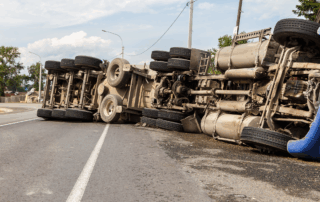WORKERS’ COMPENSATION TRENDS TO WATCH IN 2021
Not only is workers’ compensation coverage required in most states, but it also plays a major role in connecting injured employees to the care they need to return to work as quickly and safely as possible. That’s why it’s crucial for your organization to develop an effective workers’ compensation program.
To ensure a successful program, it’s important to stay up to date on the latest workers’ compensation trends. In doing so, your organization will have the information needed to respond appropriately and make any necessary workers’ compensation program adjustments.
Don’t let your organization fall behind in this evolving risk landscape. Review the following guidance to learn more about workers’ compensation trends to watch in 2021.
The Effects of COVID-19
As the coronavirus pandemic continues, many employers have had to make a wide range of organizational adjustments—such as going remote, changing employees’ roles, implementing lay-offs or furloughs, or temporarily halting operations.
These adjustments, depending on which state you are in, could be subject to various workers’ compensation-related reporting changes, as well as potentially impact your organization’s premium costs and experience modification factor. This is because your workplace risks and safety exposures have likely changed due to such adjustments. Be sure to consult legal counsel for additional, state-specific guidance on the impact of such adjustments.
Your organization should also prepare for workers’ compensation claims related to COVID-19 exposure. Generally, in terms of COVID-19, claims are evaluated on a case-by-case basis, and coverage may be triggered if both of the following are true:
- The illness in question arises out of the course and scope of employment.
- The illness in question arises out of or is caused by job-specific conditions and not an ordinary disease of life (e.g., the common cold) to which the general public is exposed.
Keep in mind that every claim is different. When it comes to compensability, you’ll need to evaluate what jobs or tasks an employee was performing when they were exposed to COVID-19. Additionally, states are going to have different thresholds for COVID-19 compensability. Some states may have more general language regarding workplace illnesses, and communicable and contagious diseases in their statutes, while others have issued specific guidance on COVID-19 claims.
Specifically, a number of states have enacted legislation and issued executive orders that expand workers’ compensation coverage for certain employees (e.g., health care workers and first responders). In particular, some states have created new rules regarding COVID-19 presumptions. A presumption describes the conditions in which an employee’s injury or illness is presumed to have happened on the job and should be compensated. Be sure to track your specific state’s developments regarding the interaction between COVID-19 cases and workers’ compensation claims.
In any case, it’s important for your organization to implement workplace health and safety measures to help protect your staff from COVID-19 exposure and limit the likelihood of related claims. Further, review guidance from your state workers’ compensation board and speak with an insurance professional to learn more about how your coverage may or may not respond to COVID-19 claims.
About the Author
Share This Story
Related Blogs
OSHA Announces Top 10 Violations for 2025
OSHA recently revealed its top 10 most frequently cited standards in the 2025 fiscal year using preliminary data. This information is valuable for businesses of all kinds, as it helps them identify common exposures that affect their workforce and gives them the information they need to plan their compliance programs.
Cyber Hygiene for Schools: Teaching Digital Safety to Students
Cyber hygiene for schools is more important than ever in today’s digital learning environment. Teaching digital safety to students not only protects their personal information but also strengthens overall school cybersecurity. With increasing online access in classrooms, cyber hygiene for schools must become a routine part of curriculum planning and student behavior expectations.
Mental Health Benefits Go Mainstream: What Employers Need to Know
Once considered a niche offering or a reactive add-on, mental health benefits have now moved to the center of the employee experience. In 2025, nearly half of U.S. employers offer some form of mental health support beyond traditional EAPs—a sharp rise from just 30% in 2023. This shift isn’t just cultural; it’s strategic.








